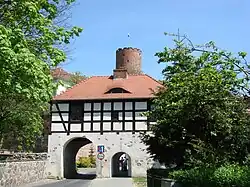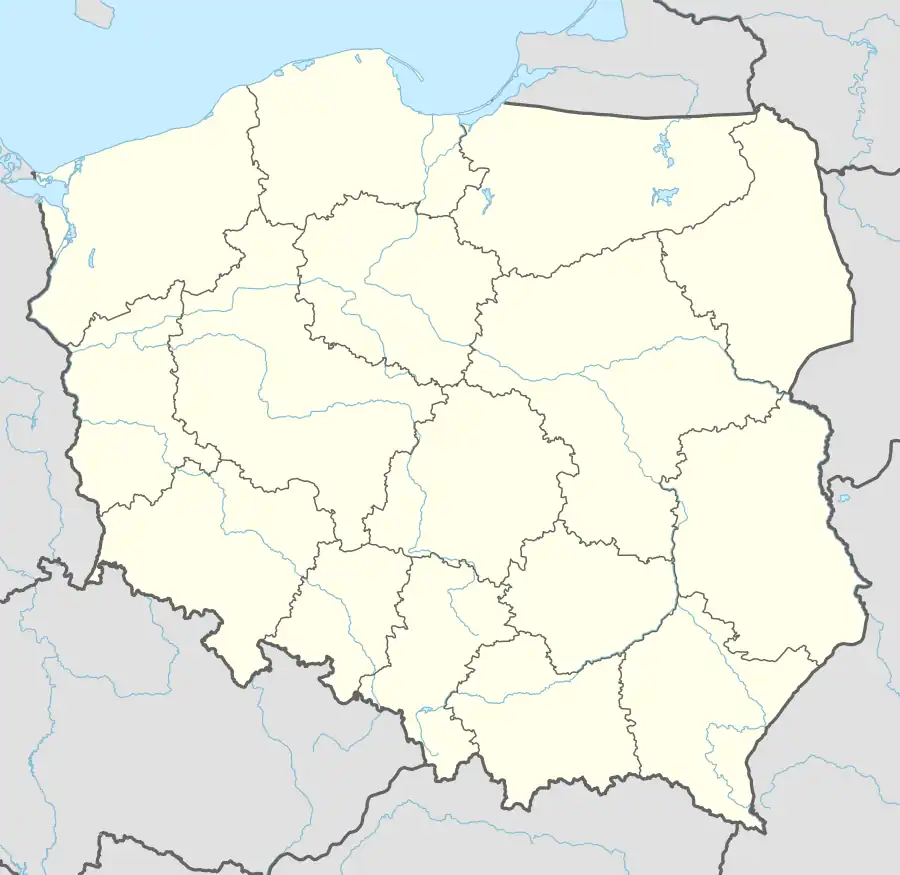Łagów, Świebodzin County
Łagów [ˈwaɡuf] is a village in Świebodzin County, Lubusz Voivodeship, in western Poland. It is the seat of the gmina (administrative district) called Gmina Łagów.[1] It lies approximately 19 kilometres (12 mi) north-west of Świebodzin, 45 km (28 mi) south of Gorzów Wielkopolski, and 46 km (29 mi) north of Zielona Góra.
Łagów | |
|---|---|
Village | |
 March of Brandenburg Gate and Tower | |
.svg.png.webp) Flag | |
| Motto(s): Perła Ziemi Lubuskiej Pearl of Lubusz Land | |
 Łagów | |
| Coordinates: 52°20′N 15°18′E | |
| Country | |
| Voivodeship | Lubusz |
| County | Świebodzin |
| Gmina | Łagów |
| Established | 13th century |
| City rights | 1727-1932 |
| Population (2006) | 1,600 |
| Time zone | UTC+1 (CET) |
| • Summer (DST) | UTC+2 (CEST) |
| Postal code | 66-220 |
| Area code | +48 68 |
| Car plates | FSW |
| Website | www.lagow.pl |
The oldest part of the village is situated on an isthmus between two lakes of the Łagowskie Lake District: Trześniowskie (186 ha) and Łagowski (82 ha). There is a Knights Hospitaller castle in Łagów, the Castle of the Order of St. John. The village gives its name to a protected area called Łagów Landscape Park.
Notable people
- Gerhard Domagk, German pathologist and bacteriologist, Nobel Prize laureate
This article is issued from Wikipedia. The text is licensed under Creative Commons - Attribution - Sharealike. Additional terms may apply for the media files.
